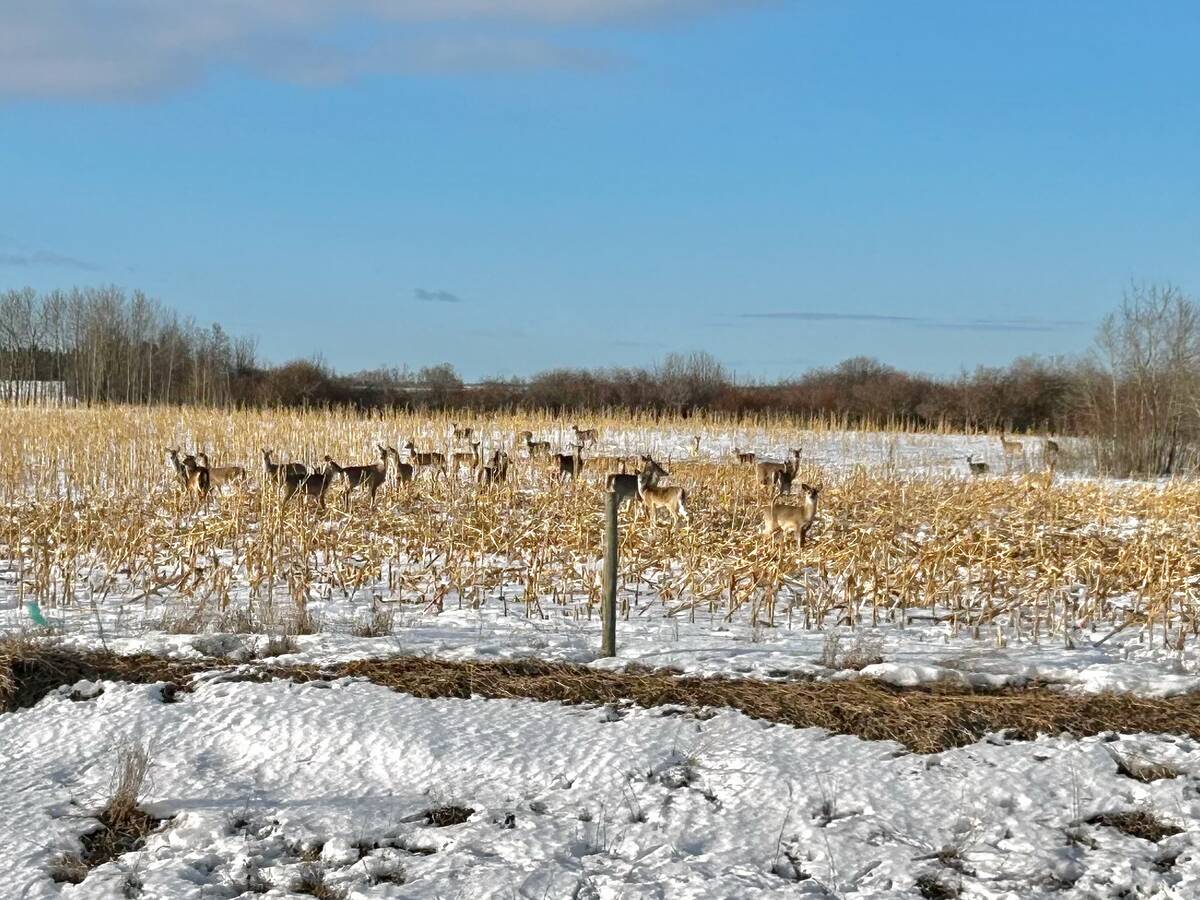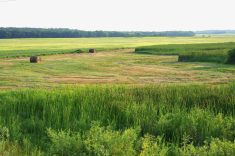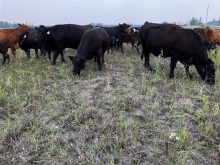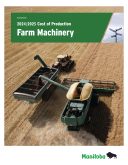Some people golf or lie on the beach, but Doug Wilcox spent a week of his July vacation in Ukraine teaching would-be crop insurance adjusters.
“My role was not just teaching the hands-on crop adjusting, but the science behind crop adjusting,” said Wilcox, manager of program development for Crop Insurance Products at the Manitoba Agricultural Services Corporation (MASC).
Multi-peril crop insurance is government subsidized in most developed countries, including Canada, making it affordable for farmers. The Ukrainian government wants to give its farmers the same advantage. By making crop production less risky the hope is farm credit will be easier to get, adding to the country’s prosperity as it evolves from a Soviet-dominated communist dictatorship to a democratic market economy.
Read Also

Five new CWD cases confirmed in Manitoba
Chronic wasting disease (CWD) has been found in five more Manitoba deer, including in two new municipalities without previous cases of the disease.
Wilcox was recruited to help by the American-based International Institute for Agricultural Risk Management, which was set up to support the creation of crop insurance programs in developed and developing countries.
INTERNATIONAL CO-OPERATION
The International Finance Corporation, a member of the World Bank Group and the Canadian International Development Agency, are helping fund the project.
Crop insurance adjusters must accurately determine the yield of a damaged crop. The information is critical in determining how much, if any, a farmer is paid after making a claim.
Wilcox taught his 22 students the North American method, which involves using a representative sample of weighed seeds from a given area to estimate a field’s yield. If seeds haven’t been produced then the number of plants in a given area is used to make the calculation.
Students also learned about the European method where seed heads are clipped and weighed. According to Wilcox one of the drawbacks is it requires more technology, including moisture testers.
Nevertheless, Wilcox said he wants to do more research on the European method to see if it offers any advantages for estimating yields of certain Manitoba crops.
The teaching was done at a Syngenta farm an hour west near Cherkassy, in central Ukraine, two hours south of Kiev, the nation’s capital.
OUTDOOR CLASSROOM
Besides classroom instruction, students worked in the field adjusting lodged winter wheat.
Ethics, documentation and time management were part of the course too.
Corruption is a common problem in Ukraine, as it is in many poorer countries, Wilcox said. The hope is that as Ukraine’s economy improves, corruption will decline.
Decades of communism have left Ukrainians skeptical about “public service,” and there’s still an expectation the people will be told what to do and how to do it, he said.
“The Ukrainians that I taught were very professional and have most of the necessary skills, they just need a little bit of specialist training and some confidence,” Wilcox said. “When combined with the resources to implement a program they will be off to the races.”
Commercial crop insurance is available, but only some farmers can afford it, Wilcox said. Coverage is usually limited to one peril, such as drought, because multi-peril insurance is too expensive.
Crop adjusters with those firms typically measure what’s harvested in the combine hopper after it makes a diagonal trip across a field. “The problem they say is a good mechanic can beat a good adjuster any time,” Wilcox said.
It’s inconvenient and impractical on large numbers of acres.
SIMILAR VIEW
Wilcox said the area he visited looked very similar to Manitoba’s Red River Valley, with large flat fields and bluffs of trees. But the region has a much longer growing season, which accounted for the many soft-fruit trees along roadsides, Wilcox said.
The weather was sweltering when Wilcox was there the third week of July. One day the temperature hit 39C, with 100 per cent humidity.
The friendly people and old farm equipment also stood out, Wilcox said.
“It was mainly old combines that I could not even identify the brand from a distance, but they are probably old Russian combines – 50 years old or more – being held together by a lot of welding and care,” he said.
“However I saw enough to know that Ukraine is a country with significant agricultural and agroindustrial potential and if they get their act together Canada better watch out.”
Wilcox regrets not having more time in Ukraine, but hopes to return for a visit. He describes what he saw as he travelled through the countryside: “Many small ‘babushka’ dachas (grandma’s cottage) with fences – every one different. Shirtless kids riding bikes with fishing rods, others swimming in the village pond. Elderly women lined up along the roadside selling bowls of tomatoes and apricots. Lush backyard gardens and trees dripping fruit. Narrow tree-lined roads. Skirted young women in heels walking on narrow, winding dirt trails. Several men drinking alcohol by the roadside – it’s 10 a. m. Tractors pulling wagons of straw. Goats and cows grazing in roadside ditches with an elderly herder sitting in the shade.” [email protected]















